"Combine the cooked mudakathan keerai leaves, tamarind juice, tomatoes, and a blend of aromatic spices to create a flavorful base for the authentic mudakathan keerai rasam." Serve the piping hot mudakathan keerai rasam with a side of steamed rice and a dash of ghee for a soulful and nourishing culinary experience that will transport you to the vibrant flavors of Tamil Nadu."
Table Of Contents:
- Mudakathan Keerai Rasam
A Brief Note On Tamil Nadu Cuisine
An Insight Into The State's Organic Food Culture
The Importance Of Leafy Greens In Tamil Nadu Cuisine
A Description About Mudakathan Keerai
Exclusive Therapeutic Properties Of Mudakathan Keerai
- Required Ingredients To Make Mudakathan Keerai Rasam
8. Step Wise Guidance To Make Perfect Mudakathan Keerai Rasam
9. Cook Like A Pro
10. Faqs
11. Mudakathan Keerai Rasam In A Nutshell
12. Appropriate Main Course Sample Menu For Mudakathan Keerai Rasam
13. A Native Ambience With A Touch Of The State's Culture
14. Takeaway
15. Nutritional Value
16. A Quick Recap From The Origin Of Mudakathan Keerai Rasam To Its Present Status
"Mudakathan keerai rasam, a comforting bowl of South Indian goodness that nourishes both the body and soul."
A Brief Note On Tamil Nadu Cuisine:
Tamil Nadu cuisine is renowned for its rich and diverse flavors, vibrant colors, and unique culinary traditions. Located in the southern part of India, Tamil Nadu has a distinct culinary identity shaped by its geographical, historical, and cultural influences.
Rice is the staple food of Tamil Nadu, and a typical Tamil meal is incomplete without it. It is often accompanied by a variety of side dishes like sambar (a lentil-based vegetable stew), rasam (a tangy soup), poriyal (stir-fried vegetables), kootu (a coconut-based vegetable and lentil curry), and thuvaiyal (chutney). These dishes showcase the abundant use of spices, coconut, tamarind, and curry leaves, which contribute to the unique flavors of Tamil Nadu cuisine.
Tamil Nadu cuisine is a beautiful amalgamation of flavors, spices, and traditional cooking techniques. It celebrates the rich cultural heritage of the region and continues to delight food lovers with its distinct and mouthwatering dishes.
An Insight Into The State's Organic Food Culture: (Iyarkai Unavu)
Tamil Nadu's "Iyarkai Unavu," which translates to "organic food" or "natural food," refers to the traditional and sustainable approach to food and cooking that has been practiced in the region for centuries. Iyarkai Unavu focuses on using locally sourced, seasonal ingredients and emphasizes the use of traditional cooking methods to preserve the natural flavors and nutritional value of the food.
In Iyarkai Unavu, there is a strong emphasis on fresh fruits, vegetables, grains, and legumes, which are considered the foundation of a healthy diet. Locally grown produce, including a wide variety of greens, tubers, and indigenous vegetables, are highly valued. These ingredients are often used in dishes like kootu (a stew with lentils and vegetables), sambar (lentil and vegetable stew with tamarind), and poriyal (stir-fried vegetables).
The concept of Iyarkai Unavu also encompasses the use of traditional spices and herbs, such as turmeric, cumin, coriander, curry leaves, and fenugreek, which not only enhance the flavor of the dishes but also have medicinal properties. These ingredients are believed to promote good health and well-being.
Another important aspect of Iyarkai Unavu is the focus on minimal processing and cooking techniques that retain the nutritional value of the ingredients. Steaming, boiling, and sautéing are commonly used methods, as they help preserve the natural goodness of the food.
In addition to the ingredients and cooking techniques, Iyarkai Unavu promotes mindful eating and balanced meals. It encourages consuming a variety of foods in moderation and emphasizes the importance of listening to the body's needs.
Iyarkai Unavu reflects the traditional wisdom of the people of Tamil Nadu, who have long recognized the value of eating wholesome, natural, and locally sourced foods. It not only promotes a healthy and sustainable way of eating but also celebrates the cultural heritage and culinary traditions of the region.
The Importance Of Leafy Greens In Tamil Nadu Cuisine:
Leafy greens hold great importance in Tamil Nadu cuisine due to their nutritional value, culinary versatility, and cultural significance. Here are some key aspects highlighting the importance of leafy greens in Tamil Nadu cuisine:
Nutritional Value: Leafy greens are highly nutritious, packed with vitamins, minerals, and fiber. They are a rich source of antioxidants and contribute to overall health and well-being. In Tamil Nadu cuisine, leafy greens provide essential nutrients like iron, calcium, and vitamin C, which are vital for maintaining good health.
Culinary Versatility: Tamil Nadu cuisine incorporates a wide variety of leafy greens, each with its distinct flavor and texture. Popular greens used in dishes include spinach, amaranth, drumstick leaves, fenugreek leaves, and colocassia leaves. These greens can be used in various preparations, such as sambar, kootu, poriyal, adai (lentil pancakes), and even in soups like rasam. They add depth, color, and a unique taste to the dishes.
Seasonal Eating: Tamil Nadu cuisine emphasizes seasonal eating, and leafy greens play a crucial role in this practice. Different greens thrive during specific seasons, and people incorporate them into their meals accordingly. This ensures that individuals have access to fresh, locally available produce that is at its nutritional peak.
Cultural Significance: Leafy greens have deep cultural significance in Tamil Nadu. They are associated with traditional festivals, religious ceremonies, and special occasions. For example, during the Tamil harvest festival of Pongal, a dish called "Keerai Pongal" is prepared, which includes rice, lentils, and a generous amount of leafy greens. It is believed to bring prosperity and symbolizes the abundance of nature.
Ayurvedic Influence: Ayurveda, the traditional Indian system of medicine, considers leafy greens as a vital component of a balanced diet. Ayurvedic principles recognize the various health benefits of different greens and their impact on doshas (energetic forces). Many traditional Tamil Nadu dishes align with Ayurvedic principles by incorporating specific leafy greens to balance the body and promote overall well-being.
In summary, leafy greens are highly valued in Tamil Nadu cuisine for their nutritional content, versatility in cooking, connection to seasonal eating, cultural significance, and alignment with Ayurvedic principles. They contribute to the overall diversity, flavor, and healthfulness of the cuisine.
A Description About Mudakathan Keerai:
Mudakathan keerai, also known as balloon vine or heart leaf moon seed, is a unique and lesser-known leafy green that is native to tropical regions, including parts of Tamil Nadu in South India. It is characterized by its heart-shaped leaves and delicate vines that often climb trees or other structures.
Mudakathan keerai is highly regarded for its medicinal properties and has been used in traditional Indian medicine systems like Ayurveda and Siddha for centuries. It is believed to have anti-inflammatory, analgesic, and anti-rheumatic properties.
The leaves of mudakathan keerai are dark green in color and have a slightly bitter taste. They are rich in nutrients, including calcium, iron, vitamins A and C, and dietary fiber. The leaves also contain alkaloids, flavonoids, and other phytochemicals that contribute to their therapeutic potential.
In Tamil Nadu cuisine, mudakathan keerai is often used in the preparation of dishes like rasam, kootu, and poriyal. It adds a unique flavor and nutritional boost to these recipes. Mudakathan keerai rasam, in particular, is a popular dish that combines the health benefits of the greens with the tangy and aromatic flavors of a traditional rasam.
Apart from its culinary uses, mudakathan keerai is also used in the form of herbal remedies. It is believed to help alleviate joint pain, reduce inflammation, and improve digestion. Traditional practices involve making a paste or decoction from the leaves and using it externally or consuming it orally for therapeutic purposes.
Overall, mudakathan keerai is a valued leafy green in Tamil Nadu due to its nutritional profile and medicinal properties. Its inclusion in traditional cuisine and traditional medicine highlights its significance in the cultural heritage and well-being of the region.
Exclusive Therapeutic Properties Of Mudakathan Keerai:
Mudakathan keerai, or balloon vine, is known for its unique medicinal properties and has been used in traditional medicine systems for various health benefits. Here are some special and exclusive medicinal health benefits associated with mudakathan keerai:
Anti-inflammatory Properties: Mudakathan keerai possesses potent anti-inflammatory properties that can help alleviate inflammation in the body. It is often used to treat inflammatory conditions such as arthritis, rheumatism, and joint pain.
Analgesic and Anti-Rheumatic Effects: The leaves of mudakathan keerai are known for their analgesic properties, which can help relieve pain and discomfort. Additionally, the herb is believed to have anti-rheumatic effects, making it beneficial for individuals suffering from rheumatoid arthritis and other rheumatic conditions.
Digestive Aid: Mudakathan keerai is considered beneficial for digestion. It is believed to have carminative properties that help relieve indigestion, bloating, and flatulence. Consuming mudakathan keerai regularly is thought to promote healthy digestion and alleviate digestive disorders.
Diuretic and Detoxifying Effects: The herb is known for its diuretic properties, which can help promote urine flow and facilitate the removal of toxins from the body. It is believed to aid in detoxification and cleansing of the urinary system.
Antimicrobial and Antifungal Activity: Mudakathan keerai exhibits antimicrobial and anti fungal properties, which can help fight against various pathogens. It is traditionally used to treat skin infections, fungal infections, and other microbial ailments.
Antioxidant Benefits: Mudakathan keerai contains antioxidants that help protect the body against oxidative stress and free radicals. These antioxidants help boost the immune system and contribute to overall well-being.
Here comes the quick and easy recipe of mudakathan keerai rasam which can be made in a jiffy in just a few steps.
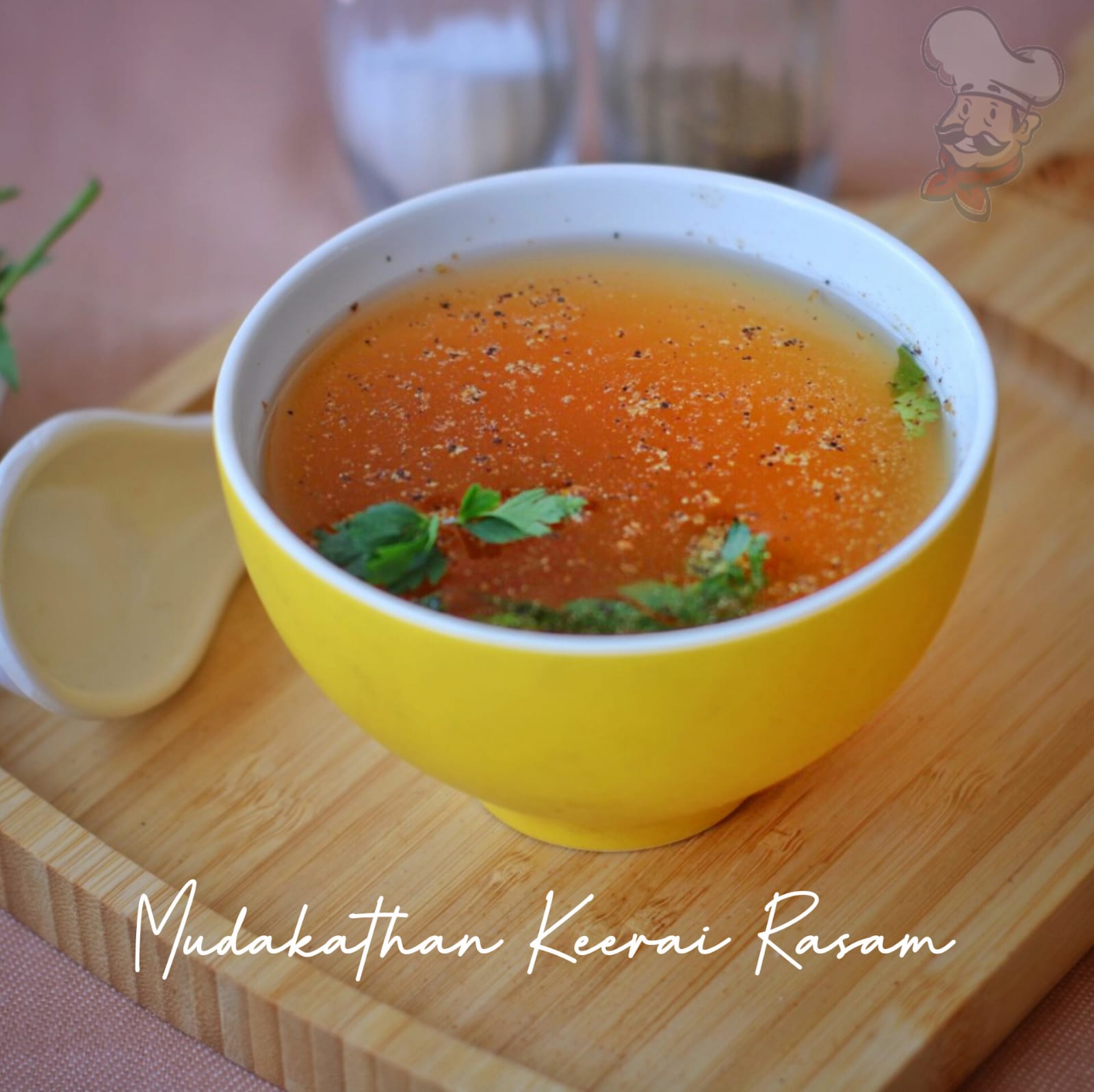
Required Ingredients To Make Mudakathan Keerai Rasam:
Mudakathan Keerai (Balloon Vine Leaves): These dark green, heart-shaped leaves are the star ingredient of the rasam. They are known for their unique flavor and are packed with nutrients and medicinal properties.
Tamarind: Tamarind is a tangy fruit used to extract juice that adds a sour and tangy taste to the mudakathan keerai rasam. It balances the flavors and provides a refreshing element.
Tomatoes: Chopped tomatoes contribute a natural sweetness, tanginess, and a bit of acidity to the rasam. They enhance the overall flavor and texture of the dish.
Mustard Seeds: Mustard seeds are used for tempering and add a distinct, nutty flavor to the rasam. They also provide a slight crunch when eaten.
Cumin Seeds: Cumin seeds have a warm, earthy flavor and are commonly used for tempering. They enhance the aroma and add a depth of flavor to the rasam.
Black Peppercorns: Black peppercorns are known for their pungent and spicy taste. They lend a hint of heat and provide a zest to the mudakathan keerai rasam.
Garlic: Crushed garlic cloves bring a strong and aromatic flavor to the rasam. They also have health benefits, including potential antimicrobial properties.
Dry Red Chilies: Dry red chilies are used for tempering and provide a mild to moderate level of spiciness to the rasam. They contribute to the overall flavor profile.
Turmeric Powder: Turmeric powder adds a vibrant yellow color to the rasam and also provides a mild earthy flavor. It is known for its antioxidant and anti-inflammatory properties.
Curry leaves: Added as an aromatic agent and as a healthy tempering leaf.
Salt: Salt is an essential ingredient that enhances the overall taste and balances the flavors of the rasam.
Ghee or Oil: Ghee or oil is used for tempering and adds richness and depth to the rasam. It enhances the overall taste and mouthfeel of the dish.
Fresh Coriander Leaves: Fresh coriander leaves are used as a garnish and add a fresh, herby flavor to the rasam. They provide a pop of color and a final touch of freshness.
Each ingredient plays a crucial role in creating the unique flavors, aromas, and health benefits of mudakathan keerai rasam.
Step Wise Directions To Make Delicious Mudakathan Keerai Rasam:
1. Boil The Green: Boil Mudakathan keerai leaves with some water.
2. Take The Extract: Squeeze out the boiled green and take out the extract out of it.
3. Soak The Tamarind: Soak the tamarind and take the juice.
4. Pound The Spices: Make a coarse mixture of the spices using a mortar and pestle.
5. Temper The Spices: Temper the ingredients and add tomatoes, tamarind juice and slat.
6. Add The Mudakathan Extract: Add the mudakathan extract and boil.
7. Garnish The Rasam: Make it aromatic with some coriander leaves and serve hot with rice and ghee.
Heat a saucepan and pour in two cups of water and when it comes to a boil, just add in a cup of mudakathan keerai into it after cleaning and rinsing thoroughly. Lower the flame and let it boil for about ten minutes approximately.
Turn off the flame when the color changes and when it cools down slightly, just filter the boiled mudakathan keerai using a tea filter and keep the extract.
Take a mortar and pestle and just clean it up with a neat cloth. Add the measured quantities of garlic, black peppercorns, cumin seeds and curry leaves to it. Gently pound them into a coarse mixture and keep aside.
Heat the pan again and tip in a tablespoon of gingely oil and when it is heated, just add a teaspoon of mustard seeds to it. When it starts to splutter, just scatter some cumin seeds along with a roughly torn red chili. Then add a pinch of asafoetida powder with a small stir.
When the sizzle stops, gently squirt in the pound spice mixture and stir in for a few seconds to get aromatic. Then dust a little turmeric powder along with a nice stir.
At this stage, plop in the chopped tomatoes and stir for a second or two to soften it up. Now add the tamarind water along with the required salt. Let it boil in low flame for two minutes approximately.
At last add the mudakathan keerai extract and alter the flame to high mode and allow it to boil for a minute or two. When it comes to a boil, just turn off the flame.
Garnish with some lush green cilantro and serve hot with steamed rice and papad.
Cook Like a Pro:
Dos:
Do clean and wash the mudakathan keerai (balloon vine leaves) thoroughly before using them in the rasam. Remove the stalk and get rid of any dirt or impurities from the leaves.
Do use fresh and ripe tomatoes for a tangy and flavorful rasam. Choose tomatoes that are firm and have a bright red color.
Do soak the tamarind in warm water and extract the juice to achieve the right balance of tanginess in the rasam. Adjust the quantity of tamarind juice based on your personal taste preferences.
Do temper the rasam with mustard seeds, cumin seeds, black peppercorns, and other spices for added flavor. The tempering process enhances the aroma and taste of the mudakathan keerai rasam.
Do adjust the level of spiciness according to your preference. Add or reduce the amount of dry red chilies and black peppercorns to suit your taste.
Do simmer the rasam on low heat to allow the flavors to blend together. Avoid boiling the rasam vigorously as it may affect the taste and texture.
Don'ts:
Do not overcook the mudakathan keerai. Overcooking can result in loss of nutrients and affect the texture and taste of the rasam. Add the mudakathan keerai extract towards the end of the cooking process to retain its freshness.
Don't use overripe or mushy tomatoes in the rasam. They can make the rasam too sweet or alter the overall flavor.
Do not skip the tempering process. Tempering enhances the taste and aroma of the mudakathan keerai rasam, adding depth and complexity to the flavors.
Don't use excessive tamarind juice as it can overpower the flavors of the rasam. Add it accordingly and taste it before you finish the process.
Don't rush the simmering process. Allowing the rasam to simmer on low heat for a sufficient time helps in developing the flavors and ensures a well-balanced taste.
- By following these dos and don'ts, you can create a flavorful and delicious mudakathan keerai rasam that showcases the unique taste and health benefits of this traditional dish.
Faqs:
1: What is mudakathan keerai rasam?
A: Mudakathan keerai rasam is a traditional South Indian soup or stew made with mudakathan keerai (balloon vine leaves) and flavored with a blend of spices. It is known for its unique taste and the medicinal properties of the mudakathan keerai.
2. Can mudakathan keerai rasam be consumed regularly?
A: Yes, mudakathan keerai rasam can be consumed regularly as part of a balanced diet. However, it is always advisable to consume it in moderation and consult with a healthcare professional, especially if you have any specific health concerns or conditions.
3 Is mudakathan keerai rasam suitable for everyone?
A: Mudakathan keerai rasam is generally considered safe and suitable for most people. However, individuals with specific allergies, dietary restrictions, or medical conditions should clarify from experts and seek advice from a healthcare professional before consuming it.
4. Can Mudakathan Keerai Rasam be stored in the refrigerator?
It is always recommended to consume rasam (any rasam for that matter) within a few hours you make it in order to gain its fullest benefits. However, you can finish it off at least by the end of the day you prepare it and especially when you make mooligai rasam like this mudakathan keerai rasam, it is highly advisable to relish it then and there.
Mudakathan Keerai In A Nutshell:
Nature: Mudakathan keerai rasam is a traditional South Indian dish that is known for its comforting and nourishing nature. It is considered a wholesome and flavorsome soup/stew.
Color: Mudakathan keerai rasam typically has a reddish-brown color with hints of green from the keerai (balloon vine leaves) and other ingredients like tomatoes and spices.
Smell: The aroma of mudakathan keerai rasam is a delightful combination of tangy, spicy, and earthy notes. It carries the distinct fragrance of the spices used, such as mustard seeds, cumin seeds, and black peppercorns.
Taste: Mudakathan keerai rasam has a well-balanced taste that is tangy, slightly spicy, and savory. It has a tanginess derived from tamarind and tomatoes, a mild spiciness from black peppercorns and dry red chilies, and light bitterness from the mudakathan keerai leaves.
Flavor: The flavor profile of mudakathan keerai rasam is complex and layered. It incorporates the flavors of the mudakathan keerai leaves, spices, tamarind, and tomatoes. The ground mixture used in the recipe adds an aromatic and savory element to the dish.
Consistency: Mudakathan keerai rasam has a thin and slightly watery consistency, similar to that of a soup or thin stew. It is not overly thick but has enough body to coat the rice when served.
Texture: The texture of mudakathan keerai rasam is smooth with tender pieces of mudakathan keerai leaves and bits of tomatoes. It is not meant to have any chunky or coarse elements.
To sum up, mudakathan keerai rasam is a flavorful and aromatic dish with a tangy and mildly spicy taste. Its reddish-brown color, thin consistency, and smooth texture make it a comforting and satisfying soup that is often enjoyed with rice as part of a South Indian meal.
Appropriate Main Course Sample Menu For Mudakathan Keerai Rasam:
Mudakathan Keerai Rasam: The star of the meal, mudakathan keerai rasam, served hot and flavorful. It can be the centerpiece of the menu.
Steamed Rice: Serve a generous portion of steamed rice alongside the mudakathan keerai rasam. The rasam can be poured over the rice for a delightful combination.
Potato Poriyal: Prepare a simple and flavorful potato poriyal (stir-fry) as a side dish. Sautéed potatoes seasoned with mustard seeds, urad dal, curry leaves, and spices make a delicious accompaniment to the rasam and rice.
Cabbage Kootu: Prepare a comforting cabbage kootu, which is a mildly spiced stew made with cabbage, lentils, and coconut. The kootu adds a nutritious and hearty element to the meal.
Papad: Serve crispy papads (papadums) as a crunchy side dish. They provide a contrasting texture and can be enjoyed by themselves or with the rice and rasam.
Mango Pickle: Add a tangy and spicy mango pickle to the menu for a burst of flavor. It complements the rice and rasam combination and adds an extra zing to the meal.
Buttermilk: Offer a glass of buttermilk, seasoned with spices and fresh herbs, as a refreshing and digestive drink option.
Payasam (Dessert): End the meal on a sweet note with a traditional South Indian dessert like payasam. You can choose from options like semiya payasam (vermicelli pudding) or paruppu payasam (lentil pudding).
Fresh Curd: Include a bowl of fresh curd as a cooling and refreshing accompaniment. It helps balance the flavors and provides a creamy element to the meal and it is also customary for any south Indian meal to end with curd rice.
This menu showcases a well-rounded and balanced meal with mudakathan keerai rasam as the highlight. It includes a variety of flavors, textures, and complementary dishes that create a wholesome and satisfying dining experience.
A Native Ambience With A Touch Of The State's Culture:
Decorate the space with traditional South Indian elements such as banana leaves, kolam (rangoli) designs at the entrance, and brass lamps. Use vibrant fabrics and textiles with traditional motifs like Madras checks or Kalamkari prints for tablecloths or cushion covers. Create a corner or wall display showcasing artifacts, paintings, or photographs representing Tamil Nadu's rich cultural heritage. Include items like Tanjore paintings, traditional musical instruments like mridangam or veena, and statues of Tamil deities.
Encourage guests to dress in traditional Tamil Nadu attire, such as saris, dhotis, and veshtis. This adds a visual element that reflects the cultural heritage of the region. Serve the meal on banana leaves instead of plates. This is a traditional way of serving food in Tamil Nadu and adds an authentic touch to the dining experience. Gently guide your guests with how to enjoy and explore eating with their hands if they are not familiar with the custom. Arrange seating on the floor with colorful mats. Use low wooden tables or banana leaf mats for a traditional dining setup. This mimics the style of eating in traditional Tamil Nadu households.
Provide traditional Tamil Nadu games like pallanguzhi, adupuliattam, or paramapadam for guests to enjoy during the gathering. These games are not only fun but also a part of Tamil Nadu's cultural heritage. Remember, creating a native ambience with a touch of Tamil Nadu's culture is all about embracing the traditions, aesthetics, and flavors that represent the region. Incorporate these elements thoughtfully to provide an immersive and memorable experience for your guests.
Takeaway:
"Tamil Nadu's parambariya unavu murai is a culinary treasure that embodies the rich heritage and diverse flavors of the region. From aromatic mooligai rasam to mouthwatering delicacies, it showcases the mastery of traditional cooking techniques passed down through generations. With its vibrant colors, tantalizing aromas, and unforgettable tastes, Tamil Nadu's parambariya unavu murai is a testament to the artistry and deep-rooted love for food that defines the cuisine of this remarkable land."
A Quick Recap: From The Origin Of Mudakathan Keerai Rasam To Its Present Status:
The origin and history of mudakathan keerai rasam can be traced back to the culinary traditions of Tamil Nadu, a southern state in India known for its rich and diverse cuisine. Mudakathan keerai, also known as balloon vine or heartleaf moonseed, is a leafy green plant that grows abundantly in the region.
Mudakathan keerai has been traditionally used in Ayurveda and Siddha medicinal practices for its numerous health benefits. It is believed to possess anti-inflammatory, analgesic, and anti-rheumatic properties. Over time, the local community incorporated mudakathan keerai into their culinary repertoire, creating various dishes to enjoy its nutritional and medicinal properties.
Rasam, a popular South Indian soup or stew, has a long history and is an integral part of Tamil Nadu's cuisine. Rasam is known for its digestive properties and is often consumed as a comforting and healing dish. The use of tamarind, tomatoes, spices, and herbs in rasam provides a unique blend of flavors that complement the main ingredients. And it has been scientifically acknowledged that South Indian Rasam has incredible healing properities against several diseases including cancer.
The idea of incorporating mudakathan keerai into rasam likely emerged as a way to combine the health benefits of the keerai with the flavors and nutritional value of the rasam. By adding mudakathan keerai to the rasam, it not only enhances the taste but also infuses the dish with the medicinal properties of the leafy green.
The exact timeline of when mudakathan keerai rasam originated is unclear, as it has been passed down through generations as a traditional recipe within Tamil Nadu households. It is a testament to the region's rich culinary heritage and the wisdom of using local ingredients for their health benefits.
Today, mudakathan keerai rasam continues to be cherished as a traditional dish in Tamil Nadu. It is prepared and enjoyed by people who appreciate the unique combination of flavors, nutritional value, and medicinal properties that it offers.
As with many traditional recipes, mudakathan keerai rasam showcases the resourcefulness and creativity of the local community in utilizing nature's gifts to create delicious and nourishing meals.
Ingredients
Directions
Heat a saucepan and pour in two cups of water and when it comes to a boil, just add in a cup of mudakathan keerai into it after cleaning and rinsing thoroughly. Lower the flame and let it boil for about ten minutes approximately.
Turn off the flame when the color changes and when it cools down slightly, just filter the boiled mudakathan keerai using a tea filter and keep the extract.
Take a mortar and pestle and just clean it up with a neat cloth. Add the measured quantities of garlic, black peppercorns, cumin seeds and curry leaves to it. Gently pound them into a coarse mixture and keep aside.
Heat the pan again and tip in a tablespoon of gingely oil and when it is heated, just add a teaspoon of mustard seeds to it. When it starts to splutter, just scatter some cumin seeds along with a roughly torn red chili. Then add a pinch of asafoetida powder with a small stir.
When the sizzle stops, gently squirt in the pound spice mixture and stir in for a few seconds to get aromatic. Then dust a little turmeric powder along with a nice stir.
At this stage, plop in the chopped tomatoes and stir for a second or two to soften it up. Now add the tamarind water along with the required salt. Let it boil in low flame for two minutes approximately.
At last add the mudakathan keerai extract and alter the flame to high mode and allow it to boil for a minute or two. When it comes to a boil, just turn off the flame.
Garnish with some lush green cilantro and serve hot with steamed rice and papad.

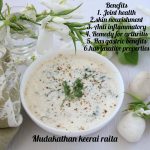
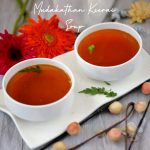
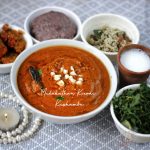

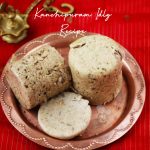
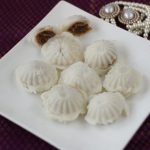


Whoa! This blog looks just like my old one! It’s on a entirely different topic but it has pretty much the same page layout and design. Excellent choice of colors!